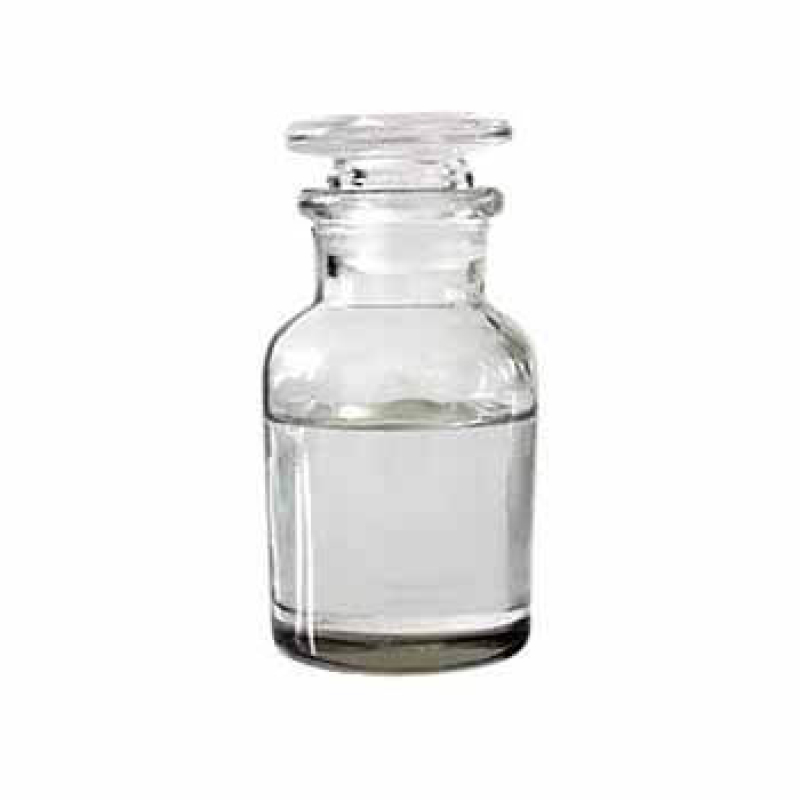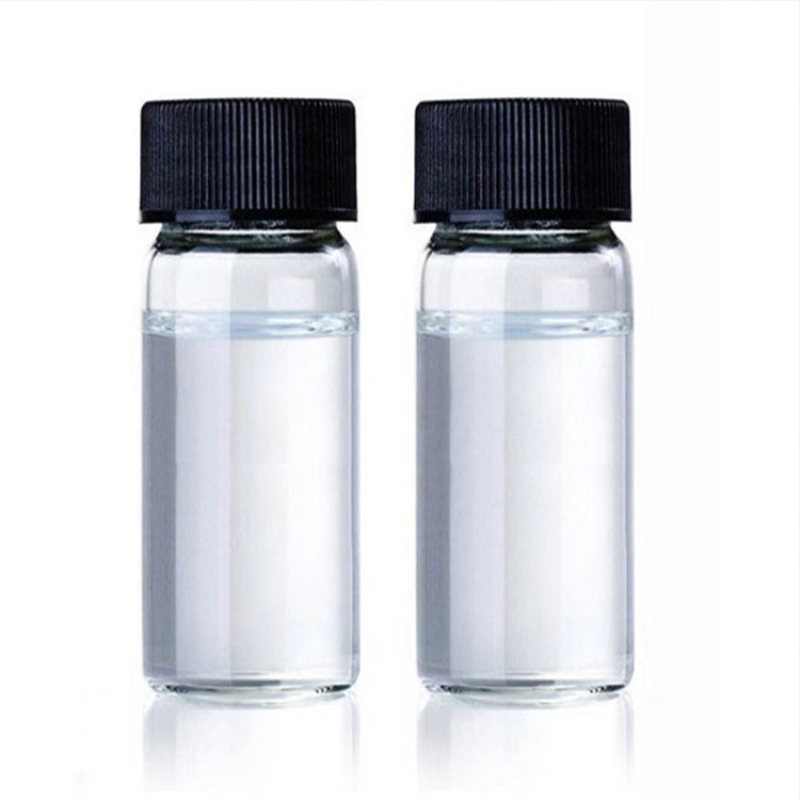Products Description of Carnauba wax CAS#8015-86-9Extracted and refined from the leaves and buds of Brazilian palm, it is hard and brittle, insoluble in water, and is a hard, high-melting-point, shiny wax.
Contact Now
Products Description of DL-Limonene CAS#138-86-3Dipentene is a colorless, flammable liquid at room temperature with a pleasant lemon scent.
Contact Now
Products Description of 2,4,5-Trimethoxybenzaldehyde CAS#4460-86-02,4,5-Trimethoxybenzaldehyde is mainly used to prepare asarone. α-Asarone is mainly found in the volatile oils of natural products such as Acorus calamus. It has sedative, prolonged hypnotic and antibacterial effects. It is clinically used to treat mental illnesses such as chronic bronchitis, epilepsy, and coma.
Contact Now
Products Description of Dioctyl terephthalate CAS#6422-86-2Dioctyl terephthalate (DOTP) is a high-performance main plasticizer for polyvinyl chloride (PVC) plastics. Compared with the commonly used diisooctyl phthalate (DOP), it has the advantages of heat resistance, cold resistance, low volatility, anti-extraction, flexibility and good electrical insulation performance. It shows excellent durability, soap water resistance and low-temperature flexibility in the products.
Contact Now
Products Description of Carbon Black CAS#1333-86-4Carbon black is a finely divided form of carbon. It may ignite explosively if suspended in air in the presence of an ignition source or slowly undergo spontaneous combustion upon contact with water.In addition, it is toxic by inhalation, with a TLV of 3.5 mg/m3 in air. Primary uses are in the manufacture of tires, belt covers, plastics, carbon paper, colorant for printing inks, and as a solar-energy absorber.1. It is edible black pigment.
Contact Now
Products Description of Bromobenzene CAS#108-86-1Bromobenzene is an organic compound with the chemical formula C6H5Br. It is a colorless oily liquid with the smell of benzene. Insoluble in water, soluble in most organic solvents such as methanol, ether, acetone, etc.
Contact Now
Products Description of CERIUM(III) CHLORIDE CAS#7790-86-5White crystalline particles Cerium trichloride is a colorless, deliquescent block crystal or powder. When exposed to humid air, it quickly absorbs water to form hydrates of uncertain composition.
Contact Now
Products Description of Diphenylacetonitrile CAS#86-29-3The molecular formula of diphenyl acetonitrile is C14H11N, and its melting point is 71-73°C. Boiling point 181 °C (12 mmHg). Flash point 120 °C. WATER SOLUBLE INSOLUBLE. Used as intermediates in organic synthesis.
Contact Now
Products Description of p-Menthane-3,8-diol CAS#42822-86-6Menthanediol, also known as p-menthane-3,8-diol, abbreviated as PMD, has been included in the National Cosmetic Raw Materials Catalogue (2016) and the GB2760 Food Additives Catalogue, and can be used as a cooling agent in cosmetics and food.p-Menthane-3,8-diol Chemical PropertiesMelting point 82-83 °CBoiling point 267.6±8.0 °C(Predicted)density 1.009±0.06 g/cm3(Predicted)FEMA 4053 | P-MENTHANE-3,8-DIOLstorage temp. Sealed in dry,Room Temperaturesolubility Chloroform (Slightly), Methanol (Slightly)form&
Contact Now
Products Description of O-Phenylphenoxyethyl Acrylate CAS#72009-86-0White powderO-Phenylphenoxyethyl Acrylate Chemical Propertiesvapor pressure 0Pa at 20℃Water Solubility 30mg/L at 20℃InChIInChI=1S/C17H16O3/c1-2-17(18)20-13-12-19-16-11-7-6-10-15(16)14-8-4-3-5-9-14/h2-11H,1,12-13H2InChIKeyVAZQKPWSBFZARZ-UHFFFAOYSA-NSMILESC(OCCOC1=CC=CC=C1C1=CC=CC=C1)(=O)C=CLogP3.68EPA Substance Registry SystemPoly(oxy-1,2-ethanediyl), .alpha.-(1-oxo-2-propenyl)-.omega.-([1,1'-biphenyl]-2-yloxy)- (72009-86-0)Factory and Equipment ShowFast delivery timeInventory 2-3 working days New production
Contact Now
Products Description of Pyridine CAS#110-86-1Pyridine (molecular formula C6H5N) is a six-membered heterocyclic compound containing a nitrogen atom, that is, a compound generated by replacing a -CH= in a benzene molecule with nitrogen. It is similar to benzene, has the same electronic structure, and is still aromatic, so it is also called nitrogen benzene and nitrogen-benzene. It is a colorless liquid with a special odor at room temperature, with a melting point of -41.6℃ and a boiling point of 115.2℃. It forms an azeotropic mixture with water, and the boiling point is 92-93℃.
Contact Now
Products Description of 3,6-Dibromopyridazide CAS#17973-86-33,6-Dibromopyridazine is an important intermediate in organic synthesis.3,6-Dibromopyridazide CAS#17973-86-3 Chemical PropertiesMelting point 116 °CBoiling point 327.5±22.0 °C(Predicted)density 2?+-.0.06 g/cm3(Predicted)storage temp. Keep in dark place,Sealed in dry,Room Temperaturepka-1.18±0.10(Predicted)form Solidcolor White to pale yellowInChIInChI=1S/C4H2Br2N2/c5-3-1-2-4(6)8-7-3/h1-2HInChIKeyVQAFMTSSCUETHA-UHFFFAOYSA-NSMILESC1(Br)=NN=C(Br)C=C1Safety InformationHazard Codes XnRisk Statements&
Contact Now
Products Description of Poly(dipropyleneglycol)phenyl phosphite CAS#80584-86-7Colorless liquidFactory and Equipment ShowFast delivery timeInventory 2-3 working days New production 7-10 working days
Contact Now
Products Description of (R)-(-)-2-Methylpiperazine CAS#75336-86-6 White to light yellow crystalline solid.
Contact Now
Products Description of 3-Hexylthiophene CAS#1693-86-33-Hexylthiophene is an important and commonly used electroactive compound.3-Hexylthiophene Chemical PropertiesMelting point -39.15°C (estimate)Boiling point 65 °C/0.45 mmHg (lit.)density 0.936 g/mL at 25 °C (lit.)refractive index n20/D 1.496(lit.)Fp 100 °Fstorage temp. Keep in dark place,Inert atmosphere,Room temperatureform Liquidcolor Clear colorless to slightly yellow or redWater Solubility Partly soluble in water.BRN 1617129CAS DataBase Reference1693-86-3(CAS DataBase Refe
Contact Now
Products Description of Stannous methanesulfonateCAS#53408-94-9Colorless transparent liquid with the smell of rotten eggs.Stannous methanesulfonate Chemical PropertiesMelting point -27°Cdensity 1.55refractive index 1.444Specific Gravity1.550Water Solubility Not miscible or difficult to mix in water.Sensitive Air SensitiveHydrolytic Sensitivity0: forms stable aqueous solutionsExposure limitsACGIH: TWA 0.1 mg/m3; STEL 0.2 mg/m3 (Skin)NIOSH: IDLH 25 mg/m3; TWA 0.1 mg/m3InChIKeyJALQQBGHJJURDQ-UHFFFAOYSA-LCAS DataBase Reference53408-94-9(CAS DataBase Reference)EPA Subs
Contact Now
Products Description of Pyrazine CAS#290-37-9Pyrazine is a chemical.CAS No. is 290-37-9.Pyrazine Chemical PropertiesMelting point 50-56 °C (lit.)Boiling point 115-116 °C (lit.)density 1.031 g/mL at 25 °C (lit.)refractive index 1.5235FEMA 4015 | PYRAZINEFp 132 °Fstorage temp. Store below +30°C.solubility SOLUBLEpka0.65(at 27℃)form Crystalscolor WhiteSpecific Gravity1.031Odorat 0.10 % in propylene glycol.
Contact Now
Products Description of Casein CAS#9000-71-9 Casein is the main protein in the milk of mammals, including cows, sheep and humans. The protein in milk is mainly casein, while human milk is mainly albumin. Casein is a large, hard, dense, and extremely difficult to digest and decompose curd.Casein is the highest content protein in milk. It is currently mainly used as a food raw material or microbial culture medium.
Contact Now
Products Description of Dipentaerythritol hexaacrylate CAS#29570-58-9White powderDipentaerythritol hexaacrylate Chemical PropertiesBoiling point 640.7±55.0 °C(Predicted)density 1.184±0.06 g/cm3(Predicted)Fp 266 °Cstorage temp. Sealed in dry,Room Temperatureform Liquidcolor Colorless to Light yellow to Light orange clear liquidEPA Substance Registry SystemDipentaerythritol hexaacrylate (29570-58-9)Factory and Equipment ShowFast delivery timeInventory 2-3 working days New production 7-10 working days
Contact Now
Products Description of Butyl acetate CAS#123-86-4Butyl acetate is a carboxylic acid ester synthetic fragrance, also known as butyl acetate. It is a colorless transparent liquid with a strong fruity aroma. It can be mixed with ethanol and ether at will, can be dissolved in most organic solvents, and is slightly soluble in water. The solubility in water is 0.05g. Its vapor has a weak anesthetic effect, and the allowable concentration in the air is 0.2g/l. This product has a strong fruity aroma.
Contact Now
Methyltriphenylphosphonium iodide Chemical PropertiesMelting point 183-185 °C(lit.)storage temp. Keep in dark place,Inert atmosphere,Room temperaturesolubility Chloroform (Slightly), Methanol (Slightly)form Powdercolor White to light yellowWater Solubility SOLUBLESensitive Light Sensitive & HygroscopicInChIInChI=1S/C19H18P.HI/c1-20(17-11-5-2-6-12-17,18-13-7-3-8-14-18)19-15-9-4-10-16-19;/h2-16H,1H3;1H/q+1;/p-1InChIKeyJNMIXMFEVJHFNY-UHFFFAOYSA-MSMILES[P+](C)(C1=CC=CC=C1)(C1=CC=CC=C1)C1=CC=CC=C1.[I-]CAS DataBase Reference2065-66-9(CAS DataBase Reference
Contact Now
SCANDIUM CHLORIDE CAS#10361-84-9Overview:Scandium Chloride, with the chemical formula ScCl3 and CAS number 10361-84-9, is a significant industrial chemical known for its unique properties and wide range of applications.
Contact Now
Products Description of (TETRAHYDRO-2H-PYRAN-4-YL)METHANOL CAS#14774-37-9(Tetrahydro-2H-pyran-4-yl)methanol is a basic organic chemical raw material and high-quality fuel.(TETRAHYDRO-2H-PYRAN-4-YL)METHANOL Chemical PropertiesBoiling point 105 °Cdensity 1.000±0.06 g/cm3(Predicted)Fp 61°(142°F)refractive index 1.4600storage temp. Sealed in dry,Room Temperatureform clear liquidpka14.85±0.10(Predicted)color Colorless to Light yellow to Light orangeWater Solubility Slightly soluble in water.CAS DataBase Reference14774-37-9(CAS DataBase Reference)Safety I
Contact Now
Products Description of Triethylenediamine CAS#280-57-9Triethylenediamine, also known as 1,4-diazabicyclo〔2.2.2〕octane, or triethylenediamine, abbreviated as DABCO or TEDA in English, has a chemical formula of C6H12N2.
Contact Now


































